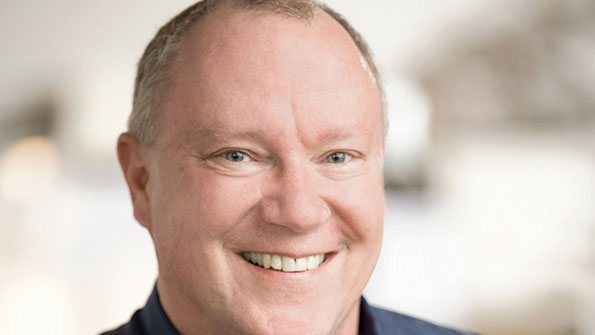BayRICS bounces back
A couple of weeks ago I wrote a column in response to the allegations made by FirstNet board member Paul Fitzgerald, who claimed that the board lacks transparency, treats its Public Safety Advisory Committee as a “necessary evil,” and has conflicts of interest that might affect its ability to shepherd the much-anticipated nationwide broadband network for first responders.
In that column, I suggested that the situation is reminiscent of the travails suffered by the Bay Area Regional Interoperable Communications System (BayRICS) Authority, the entity that has been trying to launch a public-safety 700 MHz LTE pilot project in the San Francisco Bay region. If you’ll recall, BayRICS was accused of a lack of transparency and potential malfeasance in its procedures during the early stages of its initiative.
Barry Fraser, BayRICS’ general manager, contacted me after this column appeared. He was unhappy with me for not also pointing out the progress that BayRICS has made since those dark early days. I explained to him that the point of the column was to shed light on the public-safety sector’s proclivity for shooting itself in the foot. One of these days, I fear public safety will blow off its foot and will be unable to fix the damage—though I don’t think that’s the case this time.
Certainly, members of Congress are looking closely at the alleged dysfunction, and it’s not good that this happened right out of the gate. But they instinctively know that every board on the planet occasionally experiences friction among its members; as long as Chairman Sam Ginn quickly gets to the bottom of this and takes corrective action, it should blow over.
But back to Fraser, who only recently had the “interim” label removed from his title. I agreed to chat with him, which we did a few days ago. Based on what he told me, it does appear that BayRICS has righted its ship.
Fraser wouldn’t address specifically the mess that he inherited, because he wasn’t there when it occurred, but he did acknowledge the lack of transparency.
“I see a lot of parallels to what was happening here and what is happening at FirstNet right now,” Fraser said. “It’s all about transparency, and we were not being transparent. It doesn’t mean that we were doing anything wrong or illegal, but when you’re operating behind closed doors, it raises that speculation. When people don’t know what you’re doing, they suspect the worst.”
Fraser suggested that FirstNet regularly share some of the decision-making process as it makes key decisions, particularly about network design and deployment, and that it consider opening certain matters to public comment, as do federal agencies, notably the Federal Communications Commission.
“We don’t have to know every detail,” he said. “But those are the things that make for transparency and trust and openness. That doesn’t mean that you’re not going to get criticized for your decision in the end, but you’ve at least got a record that the decision was based on that’s legitimate.”
FirstNet, are you listening?
Fraser went on to describe some of the successes that have been realized. The first was the build, own, operate and maintain (BOOM) agreement that was negotiated with Motorola, the vendor for the project and recipient of the federal grant. A key component was that Motorola agreed to separate site agreements with each county.
“That was one of the best things we did,” Fraser said. “That way, we weren’t acting as the broker for all of the radio sites in the region. That was important, because it gave each county flexibility as to how much, or how little, they wanted to participate.”
There is a downside to such an approach, which Fraser acknowledged: coverage gaps. Indeed, Marin County has decided not to participate in the network due to cost concerns, and there are additional coverage gaps in the South Bay, specifically in Santa Clara County. According to Fraser, such gaps are problematic for two reasons.
“We want to build a system that works well and serves public safety,” he said. “We want to build a system that actually convinces those folks who are not participating right now that maybe it’s a good service and they should participate. But, if we have gaps in coverage in their geographic area, that’s going to hurt our chances of that—we need to find ways to fill those gaps.
“Also, if we get into a mutual-aid situation or an incident in an area where there is a gap in coverage, that obviously hurts the ability of public safety to respond.”
But as much as he would like to see all counties in the region participate in the network, “you can’t force them to do so,” Fraser said. Indeed, if BayRICS had decided to hold out in the hopes of getting every county on board, the project may never have left the starting gate.
“Whenever you have new technology, you have a group of folks, who are called ‘early adopters,’ who want to take the technology and run with it,” Fraser said. “And then you have the majority, at first, who are a little slower to adopt. But the early adopters really drive the advance of the technology, and they frankly have more of a say in how it develops.
“So, I’ve been focusing on the early adopters in the Bay Area who see this as something they’d like to have right now. It’s really a ‘build it and they will come’ kind of attitude. We really don’t have this anywhere today, and somebody has to build some of these networks and demonstrate the value. If we can do that, I think we can bring along the rest of the folks.”
Fraser said that BayRICS has locked down 110 of the 130 sites that it targeted for this network. Importantly, more than 90% of the $50.6 million in funding provided by the Broadband Technology Opportunities Program (BTOP) is still available after NTIA froze all public-safety LTE projects in the program last year, so that FirstNet could have input into their deployments. He added that BayRICS is on the cusp of finalizing spectrum-lease agreements with FirstNet for the project; once that hurdle is cleared, the funding is expected to be released, and equipment can be ordered. After that, it will take about 6 months for the gear to be delivered and another 12 months for the first phase of the system to become operational, Fraser said.
“We’ve really had some rocky times … but I hope that’s all behind us now and we can get this project up and running,” Fraser said.
It has been opined that the BTOP projects will provide valuable lessons for FirstNet as it works to create the nation’s first coast-to-coast broadband communications network for first responders. Given the trial by fire endured by BayRICS and its seeming emergence from the ashes—and given the parallels between that experience and what FirstNet is going through right now—one call that Sam Ginn should make should be to Barry Fraser.


















